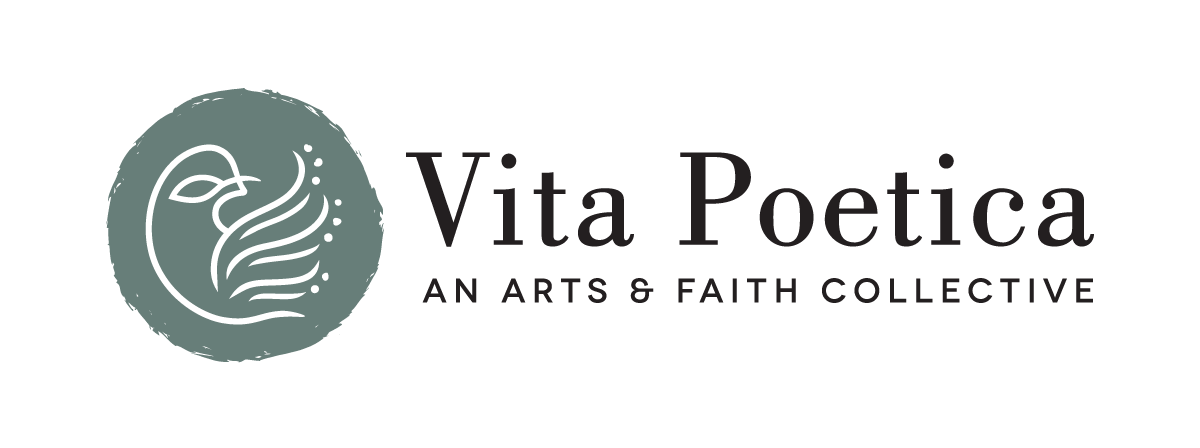Incarnation
Living Metaphors
Download a printer-friendly version of this prompt.
It’s the day before Mid-Autumn Festival as I write this, a traditional Chinese harvest moon celebration. Last year, in an unusual fit of inspiration, I’d cleared the schedule and made moon cakes with my children for the first time, thinking I’d like to dig deeper into our own cultural traditions. This year, I had to settle for a hurried trip to HMart to pick up some ice cream mochi to press into our mooncake molds—another one of those clever Facebook hacks that don't quite work the way you expect.
Like many parents, I try to be on the lookout for opportunities to engage my two boys with the world, to make things a little more real for them, even if many of these don’t pan out the way I imagine. Whether it’s something from our native culture or our faith or some concept from their schooling, experiencing it makes it more meaningful and personal. In the forest playgroup we’re part of, we join other families during the Winter Solstice to walk a spiral every year, carrying lanterns to bring warmth and light into the world on the longest night of the year. In the spring, our family’s fallen into a tradition of raising tadpoles into frogs and returning them to the same pond. And I’m still looking for a local sheep-shearing demonstration that falls during Holy Week to incorporate into our home liturgy.
I want to think that some of these experiences will imprint themselves in my children’s lives, create some palpable memory through their senses. But what’s surprised me is how these enactments often stir something deep within my own being. Watching those tadpoles sprout legs in the middle of Lent is as sure a sign of hope as any and honestly one of the highlights of parenthood for me thus far. (Though you don’t need children to try it!)
It seems making a symbol or a metaphor come to life is not something grownups often feel the need to do. Perhaps because we have the intellectual capacity to understand a symbol at its representational level, we’re less inclined to also seek out experiential knowledge of the matter. But the resurgence of ancient liturgical practices in modern church life certainly acknowledges that adults have need for experiential knowledge as well.
In the Waldorf philosophy of education that inspires some of our home learning, the first seven years of a person’s life is characterized as “dreamtime,” a process of the soul becoming a body—a description I find fascinating. Children learn how to be well in their bodies through sensory experiences, engaging the Waldorf motto of “head, hands, and heart.” For example, children first experience the letters by sound, through image, and through story and verse. They learn the forms by first walking the shape out on the floor (which feels to me like a version of a labyrinth walk), modeling it with beeswax or bread dough, and making the strokes with different parts of the body. Only as a last step do they write the letter out onto paper. In this way, the children internalize the form and its meaningful qualities rather than simply learning their function. The Waldorf curriculum actually devotes an entire subject to this sequence called “Form Drawing,” in which increasingly complicated shapes and patterns (including Celtic knots) are learned through movement, tactile experiences, and only lastly, on paper. The act of putting pencil to paper is meant to be a visual representation of the body’s movement and flow, a concept helpfully understood by waving a ribbon wand in the form.
I’ve witnessed how this seemingly roundabout way of learning a concept can impart it with depth and dimensionality, as well as greater significance in the particularities of our lives. Giving symbols and metaphors palpable form is a way to invoke wonder over their true nature. And if anyone is in need of some children to help inspire that, I’m happy to loan you mine!
— Julie Wan
Questions for Reflection:
1. What are some ways that your family (whether from childhood or adult memory) celebrates the seasons, traditions, and festivals of your culture, faith, or history? What might be some reasons that humans have need for tradition and celebration?
2. How do we create from our embodied experiences and memories? And how might the arts also recreate these embodied experiences in us? Are there specific ways that your art medium can facilitate this kind of experience?
3. Consider what Richard Rohr writes in Universal Christ: “What I am calling in this book an incarnational worldview… is the only way we can reconcile our inner worlds with the outer one… Through the act of creation, God manifested the eternally outflowing Divine Presence into the physical and material world. Ordinary matter is the hiding place for Spirit, and thus the very Body of God.”
What do you make of Rohr’s statement? Where and how do you experience Divine Presence in your own life?
4. Faith in an enfleshed God invites us to consider how we can know divine presence in our own flesh. Given conversations lately around embodied and racialized trauma, and scandals that have happened among leaders who have ignored the need for such healing, what will embodied healing, beauty, and transformation look like? What embodied practices may help us to create beauty and to know God in a new way, even on a cellular level?
